12 Common Mistakes You Might Be Guilty Of Making When Cooking Cabbage
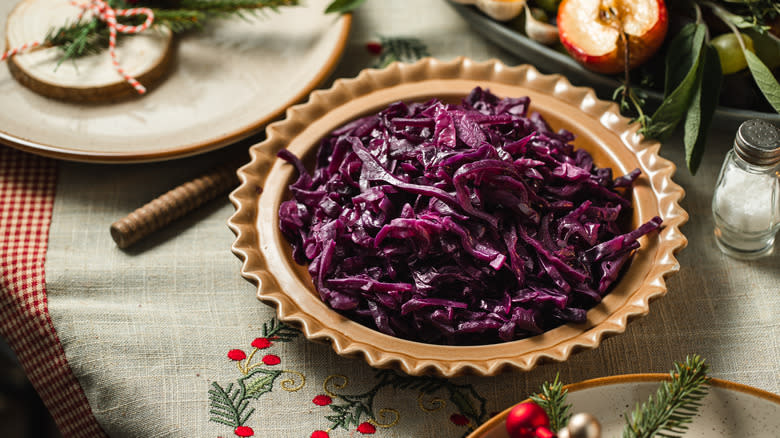
Cabbage has an unfair reputation. This cruciferous vegetable is often mocked for being smelly, tasteless, or producing some unwanted gassy side effects, but it's also a versatile and delicious addition to any meal. Cabbage can be used in recipes as diverse as pizza, egg rolls, coleslaw, and bao buns to provide crunch, sweetness, and color. These vegetables are nutrient-rich and are full of fiber and vitamin C, and they can be served raw, cooked until tender, or fermented for weeks until tart, zingy, and delicious.
However, despite the common nature of cabbage, it's surprisingly difficult to cook right. Cabbage can turn from bright green and vibrant to gray, limp, and soggy in the blink of an eye and has an unfortunate tendency to become waterlogged and unappealing. It can also become pretty nasty-smelling fast due to the presence of sulfur in the vegetable, and certain methods of cooking it can stink out your kitchen. And while the flavor of cabbage can be fresh and punchy when prepared correctly, it's way too easy to end up with a result that tastes terrible. But there's help at hand, folks -- you can avoid all of these things by correcting some crucial mistakes.
Read more: 12 Vegetables And Fruits That Used To Look Very Different
Choosing The Wrong Cabbage For Your Recipe
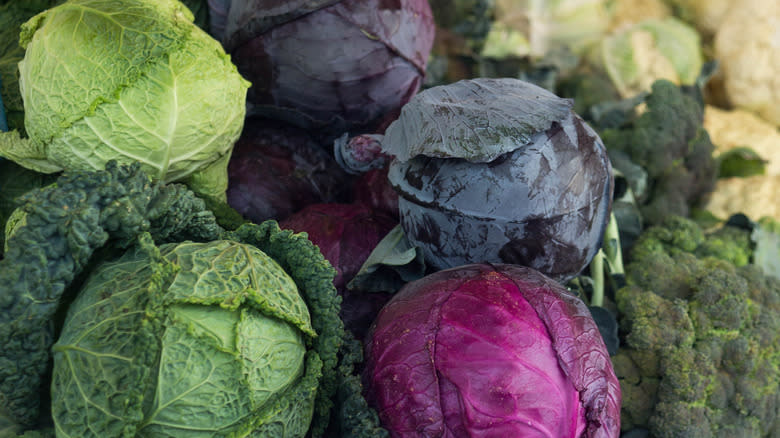
Anyone who's ever seen a selection of cabbages lined up at the grocery store will be well aware that the vegetable comes in different shapes and sizes -- and you should never assume that these shapes and sizes are interchangeable in recipes. Certain types of cabbage are better suited to certain preparations, and by swapping out bok choy for savoy, you could end up with a strange-tasting meal.
Green cabbages arguably have the most versatility. With tightly packed, smooth, crispy leaves, these cabbages have a somewhat peppery flavor, and their crunchiness makes them a good option for recipes that use raw cabbage, like coleslaw. Savoy cabbage, on the other hand, has tender, ruffled leaves. It also has a harder time holding its shape and bite when drenched in an acidic dressing. Instead, Savoy cabbages are great when sautéed or grilled, where their buttery flavor can take on nuttier, more complex notes.
While red cabbage is similar to green cabbage in terms of shape, it can have a slightly sharper flavor -- and crucially, its reddish-purple color will alter the shade of anything you add it to. Bok choy is gentle and fragrant and is best used in stir-fries or steamed and served with a sharp-tasting sauce.
Only Using One Cooking Method

For too long, cabbage has been seen as a vegetable that is boring and bland. But that's only if you cook it in certain ways. Boiled cabbage, which is the method that people often fall back on, is a surefire way to produce a bland, mushy side dish and does nothing to highlight the slightly spicy and gently sweet flavor notes in the plant.
It's important to remember that cabbage is one of the more versatile vegetables out there, and experimenting with new cooking methods is a great way to make your dinner more interesting. Frying cabbage, for example, will help the vegetable brown and caramelize, highlighting its natural sweetness. This can also occur when roasting wedges of cabbage, with the inside of the vegetable softening simultaneously, becoming fork-tender. Braising cabbage, meanwhile, is an excellent way to develop its flavor, turning the vegetable into a soft, flavorful, juicy side dish that goes perfectly with roast meat. Cabbage leaves can also be used as a container for various stuffings, creating an edible wrapper that also has a nutty, earthy taste.
Not Prepping Your Cabbage Properly
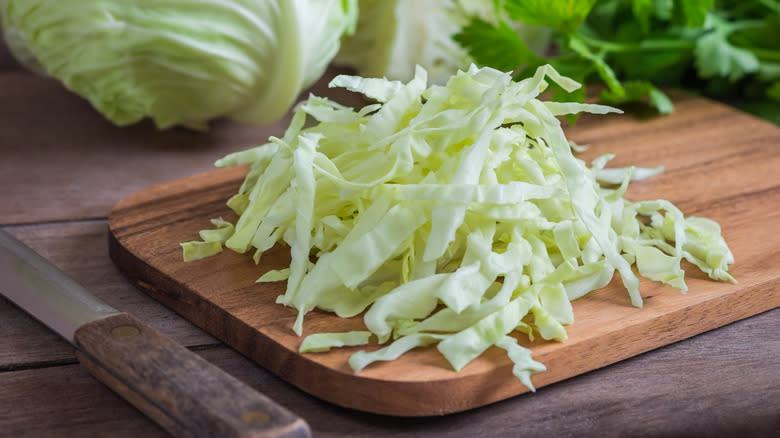
A perfectly cooked cabbage dish starts with the correct preparation of the vegetable. And if you try to cut corners, you'll end up with a poor result. Cabbage is essentially made up of two main parts: its leaves and its core. The core is largely tough, inedible, and bitter, and leaving it on the cabbage risks you accidentally including part of it in your dish and ruining your coleslaw.
To remove the core, slice your cabbage in half and then into quarters. Lay each quarter on its side, and cut the core out on a diagonal, leaving you with just the leaves. Once you've done this, you'll need to give the cabbage a wash. It's worth remembering that some cabbages can be packed tightly, and unless you can get in between the leaves, you won't be able to adequately get rid of any dirt or residue that's made its way inside. Wash your cabbage leaves thoroughly using a firm-bristled brush and running water. If you find that you have large clumps of dirt that are proving tricky to shift, allow the vegetable to sit in some water for a few minutes, and then brush away the dirt.
Overboiling Your Cabbage
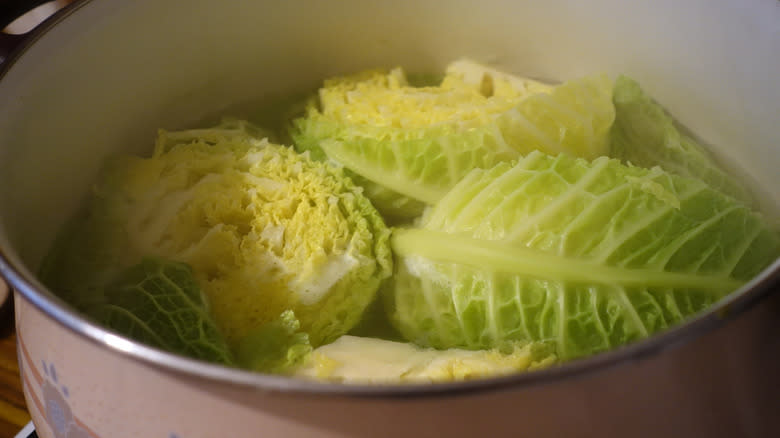
Perhaps the biggest tragedy with cooking cabbage is when its leaves turn from crisp and sprightly to mushy and flabby. And this usually happens when people boil the vegetable too thoroughly. When cabbage is overboiled, the leaves soften way too much, and your kitchen is flooded with the smell of rotten eggs. Overboiling cabbage can also sap the vegetable of its natural taste, which is exacerbated by it being cooked in plain water, which provides no additional flavor.
The key to avoiding this is to time your cabbage carefully. Separated cabbage leaves will usually take no more than five minutes to boil, and thinner leaves may require even less time than that. If you're boiling wedges of cabbage, it could take a few minutes longer. It's a good idea to keep a close eye on your cabbage as it cooks, pulling it out with a spider strainer every minute or two to assess its doneness. It's also a good idea to only add your cabbage once the water is fully boiling. If you allow the water to heat up while the cabbage is already in it, it essentially gives it a longer, slower cooking process, increasing its chance of going limp.
It's also a good idea to salt your water before adding cabbage. Salting water not only makes it boil faster but also helps to season the cabbage while it cooks, stopping it from losing all its taste.
Forgetting To Salt It
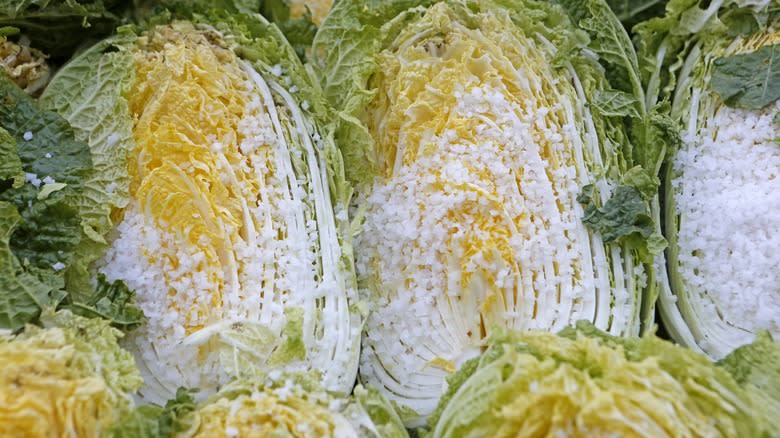
Preparing raw cabbage can be surprisingly hard. While slicing it is easy enough, raw cabbage can have a tendency to be unpleasantly tough and difficult to chew through. As the vegetable has a high water content, it can also release its liquid with little warning when it comes into contact with salt, which is a key element of coleslaw dressing -- meaning that your cabbage becomes too wet and lacks flavor.
Luckily, there's a trick to stop both of these things from happening: Salt your cabbage. Before you add any dressing to it, cover your chopped cabbage in salt and leave it for an hour or so. This will bring the water in the cabbage to its surface, pulling it out and leaving you with crispy cabbage pieces. It also helps to soften especially hard pieces of cabbage. If the cabbage still feels a bit watery after salting it, try giving your pieces a squeeze in some cheesecloth to encourage the rest of the moisture out of them. And before you add them to your coleslaw, make sure to give the cabbage a rinse and allow it to dry fully to prevent your dish from being too salty.
Skipping The Baking Soda
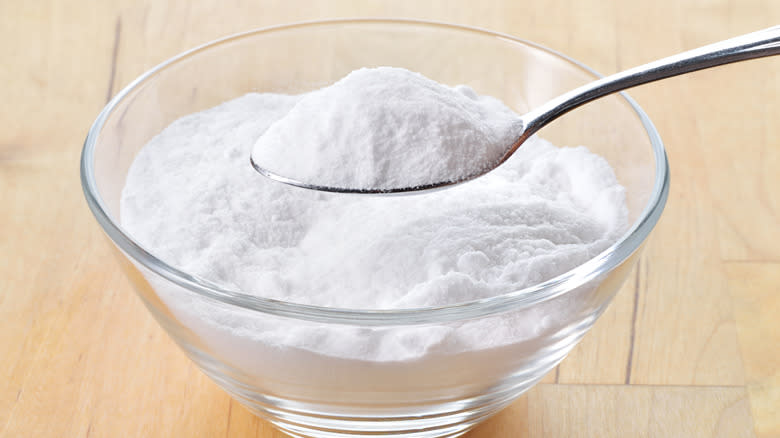
There are few greater kitchen tragedies than turning a vibrant vegetable into something colorless and drab. And unfortunately, that happens pretty frequently with green cabbage. Like all other green vegetables, cabbage is full of chlorophyll, the compound that gives it its color. When you cook cabbage, it will first become more green as the chlorophyll reacts to heat and activates. This will quickly be followed, however, with a dulling of the green shades, as magnesium starts to leak out of the vegetable and the chlorophyll loses its potency.
But with a touch of baking soda, all of this can be avoided. Baking soda has a powerful effect on the pH level of water, even when used in tiny quantities, and makes it more alkaline. This alkaline nature stops the magnesium from escaping the vegetable so quickly, thereby keeping it bright green as it cooks. Bear in mind that you really want to play it safe with your baking soda quantity here, as if you make the water too alkaline, it can ruin the texture of the cabbage. A pinch should be plenty for a big pot of water. Remember that this trick will only work with green cabbage, too -- adding baking soda to red cabbage will result in it losing its color, fast.
Cooking Improperly-Stored Cabbage
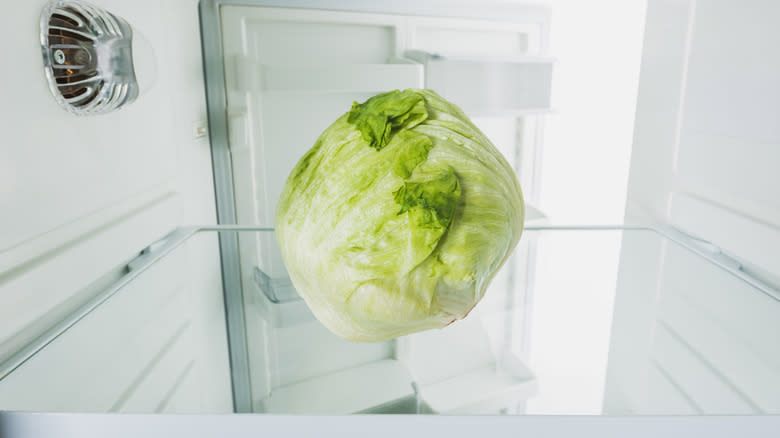
When cabbage is fresh and well-kept, it's a joy to eat. But trying to cook cabbage that you've been storing badly will lead to poor results. Cabbage is a hardy vegetable and can last for several weeks in your fridge, but improper storage can reduce its lifespan or deteriorate it, and you may end up with an end result that's completely unappetizing.
With cabbage, you generally face two main issues: The moisture trying to escape and excess moisture getting into it. The first problem can be prevented by keeping its access to the cool circulating air in your fridge as limited as possible. Place it in your crisper drawer, or keep the whole thing in a sealed Ziploc bag. To stop your cabbage from becoming overly moist while in your fridge, you should avoid washing it until you're ready to use it. If you do so, the cabbage will hold onto the water in its outer leaves, and this may lead to the vegetable going bad faster.
Cabbage should always be kept whole until you're ready to use it, with any leftover parts kept in an airtight container to minimize oxidation. If you do have to shred it ahead of time, make sure you keep it covered.
Forgetting To Use Acid
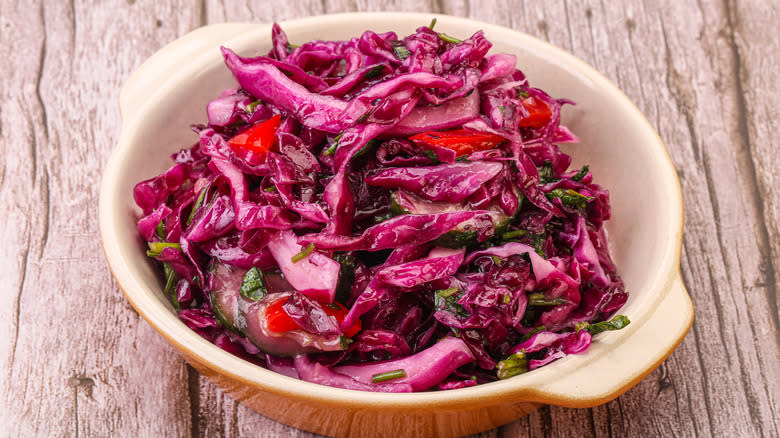
Making red cabbage can be both a joy and a nightmare. A joy because its deep color and sprightly taste lends itself perfectly to braised and pickled side dishes; a nightmare because that color always seems to want to escape. As you cook red cabbage, the heat causes the anthocyanins, which give the vegetable its color, to be destroyed, dulling the color. This is particularly obvious when red cabbage is cooked in water, which has the added effect of leaching those anthocyanins out.
Preventing color loss, though, just takes one secret weapon: Acid. Adding lemon juice or vinegar to red cabbage changes its pH to more acidic, and this acidity helps it to keep its color intact. Using acid when cooking red cabbage also has a significant effect on its flavor, balancing the natural pepperiness and sweetness of the vegetable with a sharpness that gives it a fullness of flavor. The tartness of lemon juice works particularly well when making pickled or braised red cabbage, as it prevents it from becoming too flat while simultaneously making it visually appealing.
Always Preparing Cabbage With Heat
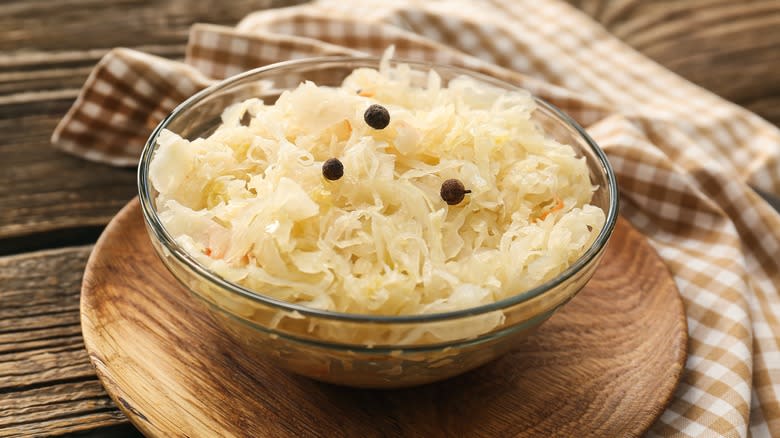
It's easy to stick to your go-to methods of cooking vegetables, and cabbage is no different. But if you've always prepared it with heat, you're missing out. Cabbage is uniquely well-suited to being fermented, which is, after all, a method of changing molecules in food, just like cooking. This is partly why condiments like sauerkraut and kimchi are based around it. The vegetable has a combination of healthy surface bacteria on its outer layers and sugar within its leaves, both of which start to react with each other when the cabbage is placed in a salty solution. As they do, they create lactic acid, giving fermented cabbage its distinctive tang and complexity.
The lactic acid is also what keeps the cabbage from becoming harmful to eat and that is why it's able to stay edible for months after its preparation. While fermenting cabbage might seem scary, it's actually way simpler than you might think. Making sauerkraut is as simple as piling some shredded, salted cabbage into a jar, adding some seasonings, and leaving it at room temperature for a few days. As the cabbage develops, it will become tender, tart, and totally delectable.
Forgetting Your Seasonings
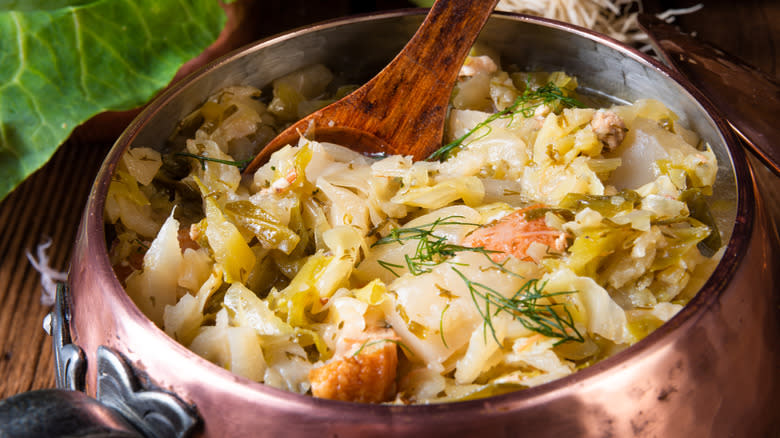
Cabbage has way more natural flavor than most people give it credit for -- but it's often not enough. And part of the reason why plain cabbage has such a bad reputation is because it's, well, plain. The truth, though, is that cabbage is the perfect base for a huge variety of flavors and seasonings. Its versatility is partly why it's such a common fixture in menus across the globe, from being a vital ingredient in Asian cuisine, where it's paired with salty, spicy, and funky flavors, to being a staple in Central European cooking, where it's often seen alongside smoky, savory ingredients.
Cabbage also pops when it's paired with carefully selected herbs, like thyme and parsley, as in cabbage, white bean, and kale soup. The vegetable's flavor is gentle enough to take on the seasonings and flavor profiles of other ingredients in meals, with one comforting cabbage recipe requiring little more than simmering it with sharp, salty bacon, tomatoes, and onions. If you prefer your cabbage a bit simpler, try drizzling it with olive oil or melted butter and adding a good amount of salt and pepper.
Wasting Leftover Cabbage

One of the most unfortunate things about cabbage is how much of it gets wasted. Reheating cooked cabbage can result in it becoming overly soft and unappetizing, as well as releasing that telltale eggy smell through your house. As a result, it's frequently tossed straight into the trash. But leftover cabbage can be a key ingredient in delicious meals like the distinctively-named "bubble and squeak," a classic British recipe that fries leftover cabbage and mashed potatoes with onion and bacon, forming a hearty frittata-like cake that's filling and delicious.
Leftover cabbage is also great added to a soup. Toss it in just before your soup is ready to serve to warm the leaves up, and you'll immediately give the meal an added boost of fiber and flavor. Leftover Savoy cabbage works brilliantly in a potato gratin, where it imbues the dish with a vegetal, slightly nutty taste. Additionally, it's entirely possible to use the leftover core of the cabbage, which people don't normally cook with. You can add the core to any stocks or broths you're making to give them additional layers of flavor.
Forgetting That You Can Minimize Its Odor
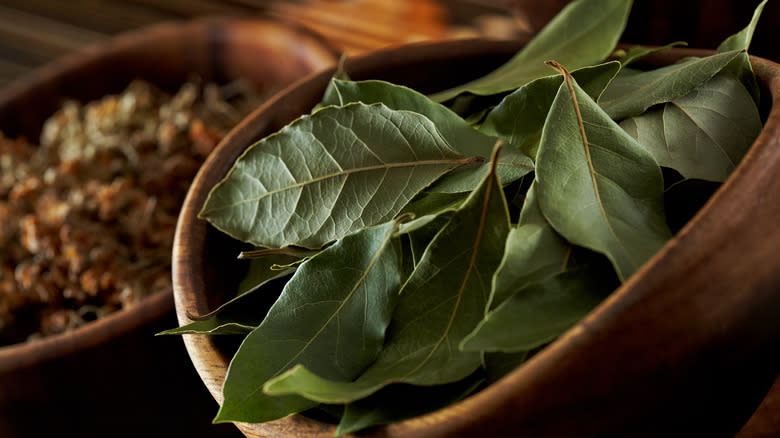
Cooked cabbage, especially when boiled or steamed, has a distinctive, eggy smell caused by the abundance of sulfur in the vegetable. But it's wrong to assume that you simply have to suffer this scent whenever you cook cabbage. Instead, remember that there are several ways you can minimize the odor when preparing it.
The easiest way to do this is by steaming the cabbage instead of boiling it and adding in some extra ingredients while doing so. Adding white vinegar to the steaming water can help to neutralize the sulphuric odor, thanks to the molecules in vinegar bonding with the molecules that cause the stench and reducing their potency. Putting some milk in the boiling water can also help to do this. Another tactic is to add something to the water or to the cabbage, which will mask or soak up the smell. Bay leaves are a surprisingly effective ingredient, thanks to their release of a subtle, fragrant aroma when cooked, which helps to nullify the impact of the cabbage odor. Placing an unpeeled potato next to your cabbage in the steaming basket may also do the trick.
Read the original article on Daily Meal.

